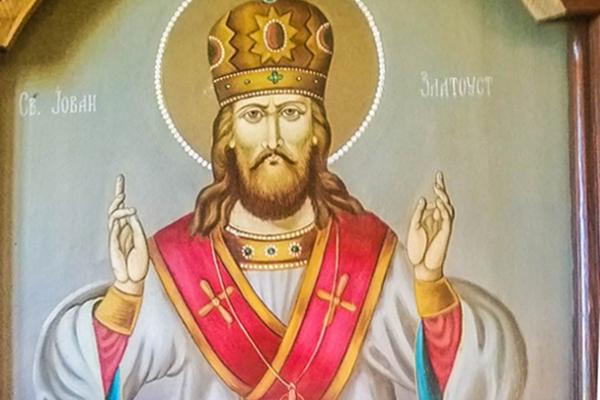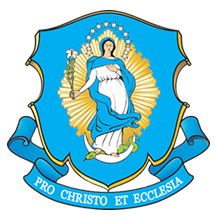
By Kimberly Bruce
He was the “golden-mouthed” preacher, “seen as a second Paul” and “a Doctor of the Universe,” said Pope Benedict XVI, describing St. John Chrysostom, whose feast day we celebrate on Sept. 13.
During his general audience address of Sept. 26, 2007, the Pope continued, “He passed on the Church’s tradition and reliable doctrine in an age of theological controversies” fraught with heresies. This “most prolific of the [Church] Fathers” wrote 17 treatises, more than 700 homilies, and commentaries on Matthew and the scriptural Letters of St. Paul.
With St. Athanasius, St. Gregory Nazianzen, and St. Basil, St. John Chrysostom forms the group of the four great doctors of the Eastern Church.
Pagan world
Born c. 349 A.D. in Antioch, St. John Chrysostom entered the world in a time riddled with pagan ideas such as Arianism, Manichaeanism, and Gnosticism. His father was a high-ranking officer in the Syrian army who died when St. John was quite young. His mother, Anthusa, instructed St. John and his sister in the ways of piety. He studied classical culture, philosophy, and rhetoric, and was a magnificent and unsurpassed orator.
In the year 367, he met Bishop Meletius, who had a huge influence upon his life. He began attending the bishop’s sermons and studying Sacred Scripture. Three years later, he received Baptism and became an ordained lector.
Not satisfied with just lectoring, St, John entered a society where members spent their days in prayer, manual labor, and study of Scripture. He lived in a cave for two years. His health declined to such an extent due to cold, fasting, and other forms of hardship that he returned to Antioch and worked again as a lector.
Oratorical skills
St. John was ordained to the diaconate in 381 A.D., and to the priesthood five years later. Utilizing his great oratorical skills, he preached for the next 12 years.
Those years earned St. John’s fame in the Church grew far beyond Antioch. He was praised for his writings, too, particularly his On the Priesthood, his Opuscula, and his 22 Homilies on the Statues. He was ordained Bishop of Constantinople in 398 A.D.
The new bishop became well-known for his reforms in the Church. To reduce episcopal expenses, he put an end to the many banquets held, and forbade the practice of utilizing consecrated virgins as housekeepers for the clergy. He came down hard on those who caused scandal in the Church, even ousting two deacons: one for murder, the other for adultery.
Saint John Chrysostom also suffered at the hands of political leaders and those possessing material wealth. His homilies, often referencing vanities and those seeking all sorts of luxuries, angered the powerful and wealthy.
Imperial ire
Empress Eudoxia was particularly infuriated by one of St. John’s sermons that she thought was directed at her. She and her husband, the Emperor Theodosius, sought to have St. John exiled. Many fraudulent accusations were brought against him. He was led before a synod filled with his enemies, and ultimately deposed.
Soon after, an accident occurred in the imperial palace. Eudoxia feared it was a punishment from God for St. John’s being exiled. She hurriedly ordered his return. Two months later, however, he was deposed a second time. This time it was for his words, which the Empress, again, assumed were aimed at her. Two attempts upon the life of St. John took place, but came to naught.
As it was taking too long for St. John to die in exile, two soldiers were sent to cause him torturous sufferings. With his body finally giving out, his last words were, “Glory be to God for all things.” He died in 407 A.D.
In 1204 his body was brought from Constantinople to St. Peter's in Rome, but was returned to the East in 2004 by Pope St. John Paul II.
Pastoral service
Leading a life fraught with such troubles as bishop, one would think that he would have pined for his days in solitude. Instead, said Pope Benedict XVI, St. John “was later to write that were he to choose between the troubles of Church government and the tranquility of monastic life, he would have preferred pastoral service a thousand times.”
Saint John worked to develop intelligence and true reason in the faithful, said Benedict, since he recognized that one’s value lies “in ‘exact knowledge of true doctrine and in rectitude of life.’”
Not surprisingly, he is patron saint of orators, lecturers, public speakers, and preachers.
Saint John Chrysostom, pray for us!
{shopmercy-ad}
















